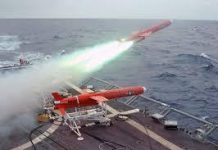
The European Union allocated €343 billion ($402 billion) to defense in 2024, the highest level ever recorded and above prior expectations, according to the latest European Defence Agency (EDA) report. Spending is projected to rise further in 2025, reaching €381 billion ($446 billion).
This figure makes the EU’s military budget around 1.5 times greater than China’s and more than triple that of Russia, with only the United States outspending the bloc. Defense accounted for 1.9% of the EU’s GDP last year, marking a 19% jump compared to 2023.
Much of the growth stems from surging investments in new military hardware and research. Together, these categories—called “defense investments” in EU terminology—absorbed 31% of total spending, equaling €106 billion ($124 billion). Out of this, €13 billion ($15 billion) went into R&D. Purchases of equipment rose 39% year over year, while R&D grew by 20%.
Almost every member state boosted its defense outlays in 2024. Sixteen of the 25 that increased spending raised their budgets by more than 10%, including Germany, Poland, Spain, Sweden, and the Netherlands. Only Ireland and Portugal cut back.
European defense expenditures have been climbing steadily since Russia’s annexation of Crimea in 2014, which pushed spending to historic lows at just €189 billion ($221 billion). The full-scale invasion of Ukraine in 2022 accelerated this upward trend. In fact, 2024’s spending exceeded the EDA’s own forecast by €17 billion ($20 billion).
The highest spenders are largely concentrated in Eastern Europe, closest to Russia. Poland dedicated nearly 4% of its GDP to defense, while Estonia, Latvia, and Lithuania each invested more than 3%.
The EU itself is taking a more central role in coordinating multinational projects and redirecting funds originally earmarked for civilian programs toward defense. While defense policy has traditionally been guarded by national governments, the war in Ukraine and shifting relations with the U.S. have softened resistance to greater EU involvement.
The EDA’s 2025 report also highlighted comparisons with U.S. capabilities, noting that while the EU has fewer fighter jets, it surpasses the U.S. in numbers of infantry fighting vehicles and main battle tanks. The report stressed that Europe’s real advantage lies in cross-border collaboration, urging further integration in procurement, interoperability, and joint R&D.
“Europe is investing record sums to safeguard our citizens, and we are determined to continue,” said EU foreign policy chief Kaja Kallas. “Defense is no longer optional—it is essential. This must be Europe’s defense era.”




